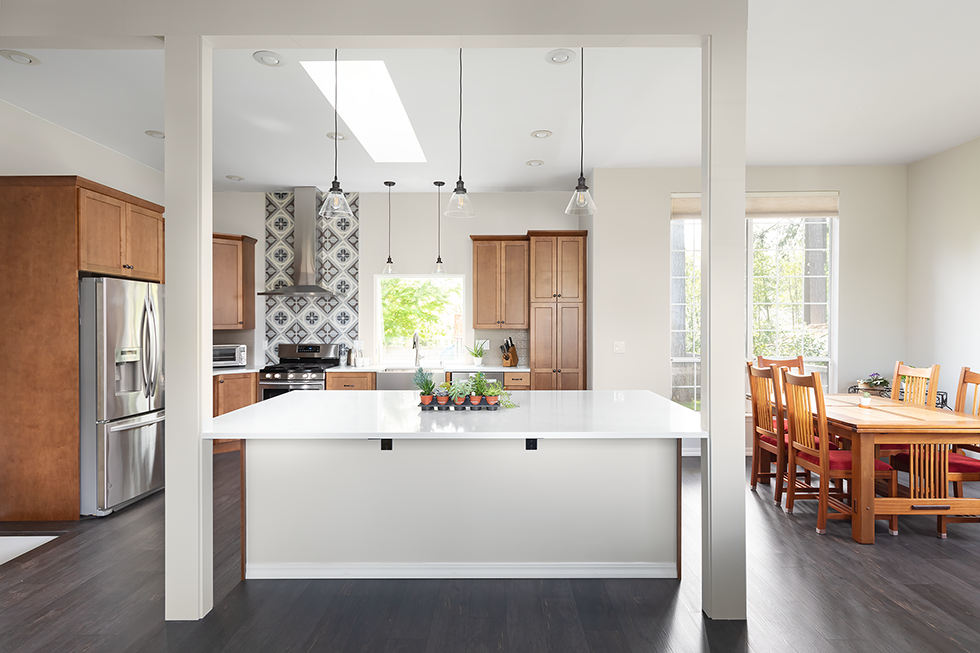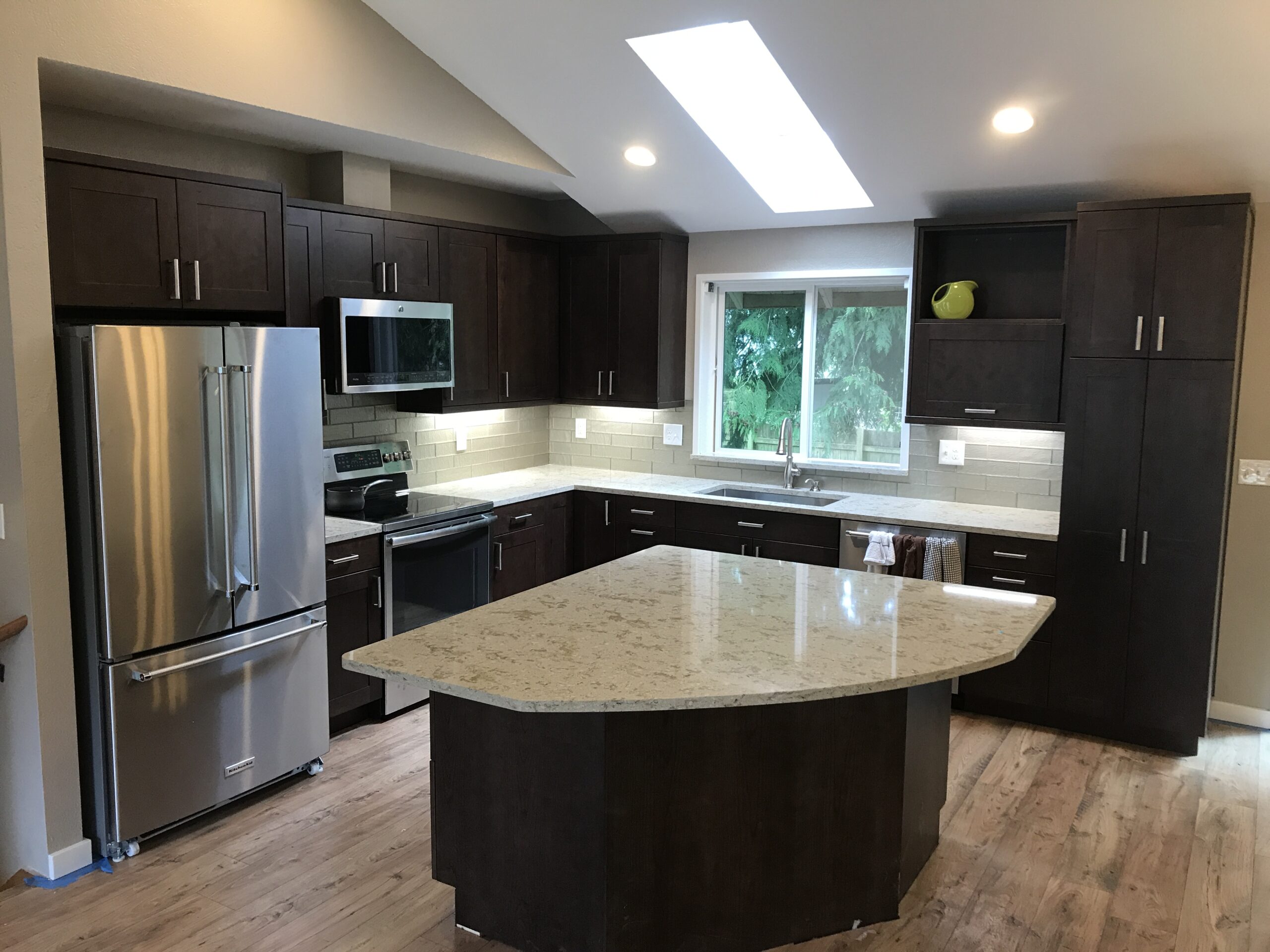
Kitchen Island Benefits and Challenges
Island or no Island?
“To island or not to island…that is the question!” You have decided to move forward with your kitchen remodel; now it’s time to start thinking about how you want the design to take shape. One of the critical design decisions will be whether you want to have a kitchen island, a peninsula, or standard countertops.
Added Space
For some, the idea of installing an island is an absolute must to improve flow around the kitchen, increase counterspace, and improve entertainment options in the kitchen. An island may also be a great way to eliminate a dining space and utilize that space in other ways (like expanding the kitchen into it).
Providing Open Concepts
With new Electrical Codes coming into play in 2024 and the higher cost of moving appliances and plumbing, this will be a critical decision that will need to be made in the initial stages of your planning. NorthLight Custom Builders’ designers focus on functional designs that will fit your lifestyle and needs.
The kitchen island has become a critical element of open concept living space that dominates current design trends. The loss of walls encircling the kitchen necessitates an area to consolidate appliances and activities, so an island is by far the most popular way to achieve this. However, an open floor plan can diminish the amount of storage space, cause you to lose countertop space and likely the location of a major appliance or two. Also, the once standard “work triangle” can be impacted making navigating the space during vigorous meal preparation activities feel unnatural.
However, the benefits of creating a more open space floor plan, improving flow into and around the kitchen, and having the option to relocate appliances can outweigh the challenges. Let’s review the common benefits and challenges to adding an island into your kitchen design.
Benefits and Challenges of Kitchen Islands
-
ncreases usable working space more than a regular countertop.
- Accessible from all sides.
- Opens kitchen entry access.
- Additional storage space.
- Additional seating area.
- Entertaining friendly.
- Additional appliance space.
-
- Decreased large appliance space.
- Could be a space hog.
- Decrease in electrical outlets (island style dependent).
- New electrical code restrictions (Section 210.52(C)(3)) state (paraphrased) that outlets cannot be installed below counter height. This new code is in the process of being adopted in the state of Washington so any new construction will need to conform to this new code.
- Design an island with a multi-tiered counter or backsplash on one side to accommodate any needed electrical outlets.
-
While large flat counter height (36”) islands are the most popular a tiered island can be a great choice to further delineate the kitchen space from the rest of the home and provide high top (42”) seating. This style also provides the opportunity for a stylish backsplash and a place to mount electrical receptacles serving the kitchen side of the island. Besides the option for a tiered island to have outlets installed, pop-up outlets are an excellent option to meet the new code on a flat island. Several pop-up models are available in rectangular and circular arrangements with colored trim options or for a more seamless look certain models can be fitted into the countertop with a thin piece of the countertop material as the cover.
-
Appliances or the sink are often excellent features within the island. The island can house major appliances such as the cook top, ovens, sink, microwave, dishwasher, drawer freezers or even undercabinet refrigerators. Having at least one major work area (like the stove or sink) in the island gives the opportunity to face into the home while working rather than having your back turned to the action. This gives the opportunity to interact with family or guests or keep an eye on the game or a favorite show.
The flexibility of island appliances is gaining popularity. The island appliance can either be the primary appliance or an accessory appliance like a beverage or specialty fridge. Drawer freezers and microwaves are additional great options that are better suited to an island than taking up storage space in wall cabinetry.
-
Fitting an island in a smaller kitchen can be tricky but is not impossible. You may want to add an island as part of a larger remodel or are considering removing a wall to open the space to accommodate an island. Smaller kitchens with an adjoining dining area may be candidates by extending the kitchen into the underutilized space and replacing the dining table with seating at the island. In many floor plans, the living room and kitchen share a common wall and removing that wall creates the most stunning impact, by creating a great room concept. This can significantly improve the flow through the floor plan and make the same square footage feel much larger.
There are several considerations that need to be addressed throughout the design of your new kitchen space to include an island. These include the size of the kitchen, the walls surrounding the kitchen (are they load bearing, do they contain essential electrical or plumbing runs), what type of truss formation was used to build the house, and many others. But these are all questions that NorthLight will work on with you through our design process so we can help you design the perfect kitchen space to meet your functional and aesthetic preferences.
Contact us!
Are you interested in remodeling your kitchen? Contact us!
